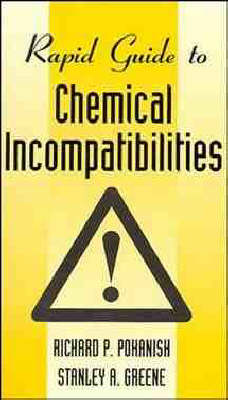VNR rapid guide
1 total work
Rapid Guide to Chemical Incompatibilities
by Richard P. Pohanish and Stanley A. Haber
Published 29 January 1997
Rapid Guide to Chemical Incompatibilities Richard P. Pohanish and Stanley A. Greene Before you store, handle, or transport any industrial chemical, turn to this timely, rapid reference guide. It brings together hard-to-find data on over 8,500 compounds and alerts you to those chemical combinations believed to be dangerously reactive if accidentally mixed. Rapid Guide to Chemical Incompatibilities approaches complicated chemical information in a convenient easy-to-use format that helps you make safe decisions fast. Its simple alphabetical organization provides concise incompatibility profiles for thousands of commonly used commercial chemicals. Simply look up the substance to instantly learn whether it is incompatible with common materials, other chemical substances, structural materials, or personal protective equipment. You'll find reliable data on its ability to generate toxic gases, rupture containers, cause polymerization, detonate, or possibly form more dangerous compounds.
Designed as a working resource for bench chemists, laboratory technicians, chemical engineers, plant safety specialists, and emergency responders, this essential guide:Provides coverage of more than 8,500 chemicalsLists chemicals and synonyms alphabetically to ensure rapid identification in emergency situationsKeys all entries by CAS numbers to eliminate possible confusion among similar synonym namesFeatures foreign language entries for international use.
Designed as a working resource for bench chemists, laboratory technicians, chemical engineers, plant safety specialists, and emergency responders, this essential guide:Provides coverage of more than 8,500 chemicalsLists chemicals and synonyms alphabetically to ensure rapid identification in emergency situationsKeys all entries by CAS numbers to eliminate possible confusion among similar synonym namesFeatures foreign language entries for international use.
